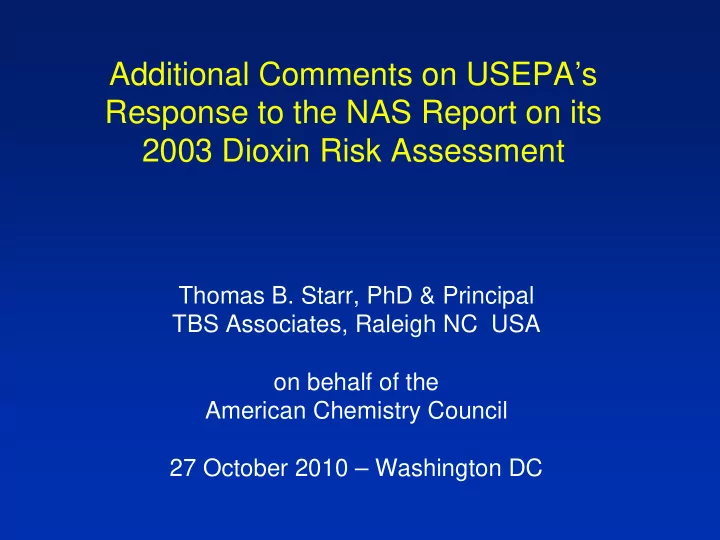

Additional Comments on USEPA’s Response to the NAS Report on its 2003 Dioxin Risk Assessment Thomas B. Starr, PhD & Principal TBS Associates, Raleigh NC USA on behalf of the American Chemistry Council 27 October 2010 – Washington DC
Three Areas Need to be Addressed • Choice of PBPK model for low-dose extrapolation • Smoking and exposures to workplace carcinogens other than TCDD need to be addressed • USEPA should implement fully a threshold-based approach to cancer risk assessment
Choosing a Reliable PBPK Model • Emond et al. PBPK model exhibits problematic supralinear behavior at low doses (n = 0.6) • Walker et al. (1999) estimated n for CYP1A1 and CYP1A2 induction: n = 0.94 (0.78, 1.14) • CADM uses n = 1 Hill kinetics • CADM is calibrated and validated against worker serum levels and Gesau patient data • Cheng et al. used CADM for exposure reconstruction
Plant-Specific SMR Analyses (Cheng et al. 2006)
Data from the 3 Occupational Cohorts are Consistent with a Threshold ~ 50 ng/kg
Specific Recommendations • Drop the problematic Emond et al. PBPK model Use CADM for cancer and noncancer endpoints • Account for impacts on estimated risks of smoking and exposure to workplace carcinogens other than TCDD • Implement fully a threshold-based approach as a credible alternative to linear low-dose extrapolation
Recommend
More recommend